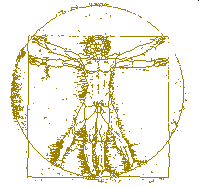Earth’s dark biomes include the soil, the caves, and the deep sea. In addition to darkness, these biomes have in common a high degree of constancy with regard to climate and periodicity. Although soil, caves, and the deep sea differ from one another in significant aspects, the fauna in each have adapted in strikingly similar ways to the darkness and constancy of their habitats.
Deep Sea
In the deep sea, organisms must be barotolerant (able to withstand tremendous pressure) and psychrotolerant (able to withstand near-freezing temperatures). Animals which are particularly well-suited in these respects are called barophilic and psychrophilic, respectively.
Caves
Organisms well adapted to cave life are described as troglophiles, while those unable to live in other environments are called troglobites. Due to the isolation of habitable cave systems, troglobites are much less frequent than troglophiles, since the latter retain the ability to leave the cave, making them more competitive.
Soil
Animals that have adapted to life in the soil are labeled cryptozoa, and their habitat is called the cryptosphere. The cryptozoa rely on darkness and high humidity, but dampness is at a higher premium than darkness. When the aquatic ancestors of cryptozoa first made their way onto land, they were forced to face the problem of regulating water loss. The required adaptations were least formidable in the moist and constant environment of the soil.
Food Sources
Photosynthetic producers cannot survive in permanently dark environments, so they are absent in the lightless biomes. In lieu of plants, it is apparent that food must be continually supplied by some external biome if the fauna of the soil, caves, and deep sea are to flourish. In each of these environments, food is supplied somewhat differently. In the deep sea, the need is met as the dead bodies of plankton and littoral marine animals sink to the ocean floor. In the soil, there is no scarcity of fallen leaves, animal feces, and carcasses. In caves, the food sources vary: guano and parasites may be brought in by bats; organic debris may be brought in by floods; and in Hawaiian lava tubes, tree roots are the principle food source.
The food chain is remarkably similar in the deep sea and caves. In the ocean, microfauna such as bacteria lack the mobility need to move quickly to large carcasses that sink to the ocean floor. Scavenging animals, because of their highly developed olfactory organs and greater mobility, are the first to eat. The organic material, however, is distributed when the scavengers defecate: only then do the nutrients in the feces reach widespread bacteria and filter feeders. This type of dispersal by defecation is closely paralleled in bat caves, where bacteria and troglobitic cave obligates with limited range get organic material from bat-guano and fallen parasites. Feces are, of course, a part of the diet of cryptozoa also, but the proportion of feces to leafy humus is small enough to be negligible.
A unique variation of the food chain as recently discovered off the Galápagos Islands during a dive by the submersible Alvin. Filter-feeding animals and clams were found in unusual abundance near certain submarine springs. It was discovered that bacteria were metabolizing inorganic compounds present in the springs. These primary, but non-photosynthetic, producers form the basis for a peculiar and intriguing ecosystem.
Vision
An expected adaptation to an environment without light is the loss of sight. It is significant to note that degeneration or loss of eyes occurs in all three dark biomes, though certain deep-sea animals develop super-sensitive eyes able to detect the bioluminescence that is not an uncommon adaptation in the ocean. In the absence of light and sight, pigment and pattern become valueless, and are gradually lost. An exception here is the retention of red or black pigments by certain deep-sea animals, presumably to guard against heat loss.
With vision a thing of the ancestral past, olfactory and tactile senses take on increasing importance. Insecta, myriapod mollusca, and crustacea cryptozoa develop highly sensitive antennae, as do a similar arthropods in cave and marine habitats. In caves, where food is extremely scarce, location of prey by the troglobitic fish Ambyopsis spelaea is largely dependent upon perception of water vibrations by the lateral-line sense organs, or neuromasts. These are far more pronounced and three times as numerous in A. spelaea than in its troglophilic relative, Chlorogasta arassizi.
Periodicity
In the sheltered and protected environments of the dark biomes, the periodicity of day and night – and even of the seasons – go relatively unnoticed. In barophiles, there are but few indications of periods affecting reproduction in a few species, and none affecting metabolism or respiration. Some troglobites have residual circadian activity affecting oxygen consumption, but these rhythms cannot be coordinated with light-dark cycles. Experiments with troglophilic crayfish, however, indicate that circanian (yearly) periods do exist, relating to reproduction. These are thought to be coordinated by subtle temperature differences accompanying spring rains. Many cryptozoa retain circadian rhythms, but these too are less related to light and dark than to temperature variations. Nocturnal cryptozoa shun daylight mobility to avoid water loss, which is extremely dangerous to them, as previously noted.
Evasion
The extreme constancy of the dark biomes has resulted in an adaptation of some interest made by predators in each biome. This adaptation is adequately exemplified for all three biomes by the barophile Bathypterois viridensis, a ten-inch tripod fish found 4,000 feet deep off the Florida Gulf Coast. It has been free from predation for so long that even a nudge from the mechanical arm of the submersible Deepstar 4000 was not sufficient to induce evasive action. It would appear that the genes governing the evasive impulse have been suppressed by natural selection.
Lifespan and Metabolism
In addition to the similarities of adaptation shared by the dark fauna, the barophiles, troglobites, and cryptozoa each have adaptations peculiar unto themselves, making habitation of their respective environments more harmonious.
Barophiles adapt to the conditions of their biome in either of two contrasting ways. Most are conservationists, adapted to the high pressure with extremely slow metabolism and long lifespans. In field and laboratory experiments, Jannasch and Wirsen found that respiration in barotolerant bacteria was 11 times slower at a depth of 3000 meters than at sea level, and carbon intake was found to be 64 times slower in the deep sea. This observation concurs Karl K, Turekian’s of shellfish, which were found to reach ages 10 to 50 times older in the deep sea than would be expected in shallow waters. Other barophiles are opportunistic, adapted to the scarcity of food. These have high metabolic rates, and devour the first available food as quickly as possible. They then reproduce and die after their one meal. This feast and famine behavior increases the chances that some of the progeny will encounter food.
Both chondrichthyes and insecta troglobites have adapted their life histories to the limited space and scarce food of the cave environment. Cave fish produce larger eggs than their surface relatives, the maturation period in the mother’s gill cavity is much longer, and the lifespan is about four times as long. These adaptations give the cave fish a higher survival rate since they are more mature when they become freeswimming, and the adults live to lay eggs twice. Cave beetles lay larger and fewer eggs than related surface beetles, so that the larva need not feed before building its pupal case. The less mobile larval stages are thus bypassed so that the larva need not compete for food until reaching maturity.
Cryptozoa have developed partially hard outer cuticles which give their bodies support without the addition of excess weight. This adaptation was particularly important for aquatic animals that encountered support problems when they emerged on land. The cuticles are permeable to gases, and this quality is at once a benefit and a limitation. Since oxygen and carbon dioxide can diffuse into and out of the body tissues, respiratory systems are unnecessary, and therefore degenerate or lacking. Cryptozoa are hence left with little or no control of their respiratory rates in response to changes in the environment. Thus, cryptozoa are quite effectively limited in their range to the constancy of the cryptosphere.
In Sum
Life in the dark biomes is characterized by sensory adaptation and degeneration or loss of daily and yearly rhythms. These general characteristics are tempered, however, with adaptive responses to unique and varied conditions present in only one or two of the lightless environments. Though life without light has developed to the degree that it is particularly suited to darkness and constancy, specialization has imposed strict limits on the range of the specialized.
Bibliography
Arehart-TreiChel, Joan. “Life in the Ocean Depths.” Science News, 109, No. 25, 19 June 1976, pp. 394-395.
Church, Ron. “Deepstar Explores the Ocean Floor.” National Geographic, 139 (1971), 110-129.
Harris, J. A. “Bat-Guano Cave Environment.” Science, 169, No. 3952, 25 Sept. 1970, pp. 1342-1343.
Howarth, Francis G. “Cavernicoles in Lava Tubes on the Island of Hawaii.” Science, 175, 21 Jan. 1972, pp. 325-326.
Jannasch, Holger W., and Carl 0. Wirsen. “Microbial Life in the Deep Sea.” Scientific American, June 1977, pp. 42-52.
“New Soil Cycle: A Basic Link, A.” Science News, 107, No. 3, 18 Jan. 1975, pp. 37-38.
Poulson, Thomas L. and William B. White. “The Cave Environment.” Science, 165, No. 3897, 5 Sept. 1969, pp. 971-981.
Savory, Theodore H. “Hidden Lives.” Scientific American, July 1968, pp. 108-114.
Essay
Title
LIFE WITHOUT LIGHT: THE DARK BIOMES
Synopsis
Comparing and contrasting life in the soil, deep sea, and caves
Topic
Biology I
ShortTitle
Life w/o Light
Date
August 9, 1980
Professor
Mrs. Sinkin
The best student paper I have ever read |
Illustration2
Illustatration1
GraderQuote
Copyright © W. Murray Sexton. All rights reserved.
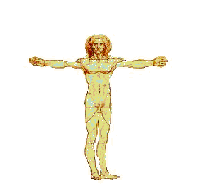
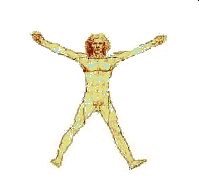

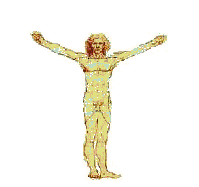
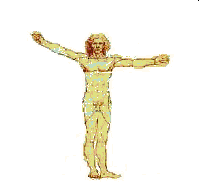
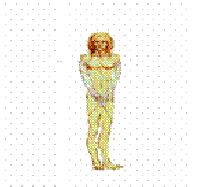
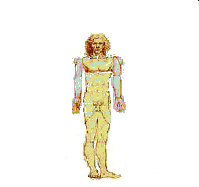
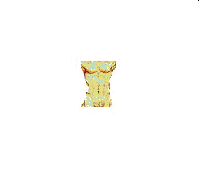
TM
